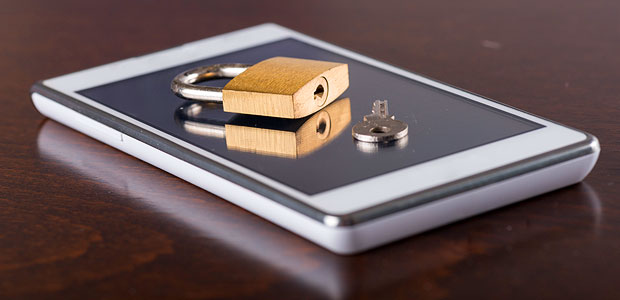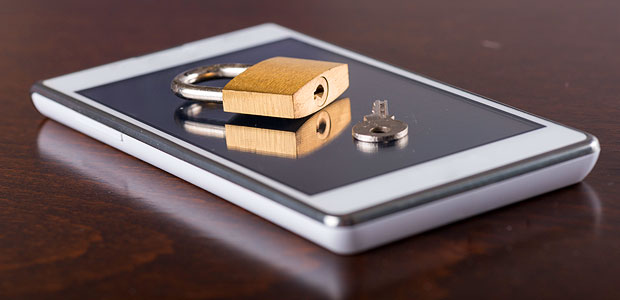Our phones are used to store and process a vast amount of digital information. From checking our bank balances, to purchasing a product by tapping the screen, or sending messages to friends and family on social media to accessing emails from work remotely, we rely on our phones to process and store reams of personal digital data.
How safe is your mobile phone? It is easy to forget that a mobile phone is basically a computer in a small package.
Mobile malware is relatively rare, and the rate of infection is only 8 percent. Mobile malware attacks are 40-1 more than PC attacks, because mobiles have much more customized operating systems and the malware must be specifically tailored for each system.
Mobile malware is increasing at a rapid rate. According to McAfee, there was a 27 per cent increase in mobile malware during the last quarter 2017.
Security of your mobile phone is a priority for both personal and professional use.

Types of mobile malware
Mobile malware is a diverse and wide range of threats. Here are a few examples:
- Mobile Spyware: This malicious software can sneak into seemingly benign applications and monitor your activities, track your location and steal passwords. It’s possible that you unintentionally gave an app permission to collect this data when you downloaded it.
- Rooting Malware: This is a particularly nasty form of malware that allows hackers to gain administrative rights and access to files. Rooting malware such as Ztorg can embed itself into system folders so that even factory resets won’t remove it.
- Mobile Banking Trojans: With the rise in mobile banking, mobile banking viruses are becoming a grave issue in cybersecurity. In 2017, mobile banking trojans targeted close to 260,00 users in 164 countries. Attackers pose as legitimate banking apps to trick users into installing them, then steal their credentials.
- SMS Malware: This type of malware manipulates a mobile device to send premium rate text messages. Often, the user is unaware of this until they get a shock bill at the end the month.
How your mobile phone can be infected
Downloading a malicious application is the most common method of infecting your device. Cybercriminals can pirate existing apps and place them on third-party app stores with malware hidden in the code. Users who download these apps will then be infected.
Hackers can also take advantage of known vulnerabilities within an operating system. This is why you should always keep your device updated with the latest software.
This old-school way of spreading a virus through fake emails is also a danger to mobile phones. It can even be done via suspicious text messages. Clicking on a link in a fake email or text will likely send you to an illusory site that downloads malware.
Connecting to a WiFi hotspot in a public place is another way to expose yourself to attack. Since public WiFi is not encrypted, attackers are able to intercept data between the user and access point. This “man-in the-middle” attack allows intruders listen to any conversations that are carried out on the compromised network.
Android vs. iOS
Google’s Android operating system is the primary target of malware. According to reports, 19 million malware programs have been developed specifically for Android. This is due to three factors: Android’s dominance in the global smartphone market, the inconsistent updates of Android and its relatively open distribution system of apps.
- Android Phones to be AttackedAndroid phones are more popular than Apple iPhones. Google’s Android OS is used by big brands like Samsung, Huawei, and HTC.
- Frequency of OS UpdatesAndroid updates are fragmented. Google’s Android updates are fragmented.
Non-Google Android phones, on the other hand, can be customized to have different apps and services depending on who is behind the phone. Each customized version releases Android updates at different rates.
- Openness of the platformAndroid is more adaptable and open than Apple iOS, making it more vulnerable to hacker attacks. Users can download applications from sources other than Google Play, which is not regulated.
In 2016, the Adware Hummingbad malware infected the majority of Android devices, with 10 million infecting the total. A variant of this malware was later discovered in 20 apps on Google’s Play Store.
Apple’s App store is a “walled” garden, which means all iPhone applications are thoroughly vetted before they can appear in this central point of distribution.
iOS Weaknesses
Apple’s iOS, however, is not completely failsafe. The massive XCodeGhost hack that took place in China in 2015 compromised 39 apps including older versions of WeChat.
Hackers had infiltrated Apple’s App Store through a fake version of XCode, a software developed by Apple. The hackers were then able to steal information and send phony alerts to compromised devices in order to trick users into divulging their personal data.
Because they bypass the security restrictions of the App Store, jailbroken iPhones are more susceptible to malware attacks. Some users jailbreak their phone to access free apps, or to get those not found on the App store. This opens users up to serious risks and they may accidentally download a dangerous application.
What are the signs of a Malware attack on your Phone?
It is easy to tell if you have a computer virus. You will probably notice hundreds of annoying pop-ups, or that your computer crashes randomly.
It may be more difficult to detect the signs of infection on your phone. It’s possible that you have malware infiltrating your phone and causing it to malfunction without realizing.
The key signs are if you notice that your device is suddenly operating slower or if the battery is draining more quickly than normal. A sudden and noticeable drop in performance is more than just an indication you need to upgrade your phone. It could also be an infection.
A sudden increase in data usage can be a sign that you have a virus. It could be that a virus is running in the background and you’re not aware, or it may be trying to connect to the Internet to send data.
Unusual charges on your bill could also be an indication of a virus. Some malware can earn money by sending premium text messages from your phone, without you even noticing. Review your bill regularly to catch any viruses.
How to remove mobile malware
What steps can be taken to remove malicious software from your phone if you suspect it has been compromised?
First, let’s look at how to remove malware from Android phones.
Start by putting the phone in Safe Mode. Hold down the power button until prompted to reboot to Safe Mode. Safe Mode disables all third-party applications, so you can be sure that the virus is at fault if your device works normally.
Go to your settings, and then the Apps folder. Search for any app you may not remember downloading or that you suspect is the culprit. Click the uninstall button to remove it manually.
Top tip: The uninstall button may be gray or not respond to your taps if the malicious app has been granted administrator rights. You will need to deactivate the administrator rights of the malicious app by going into the security settings. The app should then be removed from your app list.
You will need to perform a factory reset if you still cannot remove malicious software. You can do this by going to your phone’s settings and deleting all data.
You will not be able retrieve important files or photos afterward.
How can you remove a computer virus from your iPhone?
iOS malware is rarer than Android malware. However, attacks are still possible. Hackers may have injected malicious code into respectable apps. Some users who jailbroke their phones inadvertently download malicious apps.
It’s good to know that iOS’ sandboxing system, which limits each app’s ability to access other apps and the operating system, will prevent any malware from infecting or corrupting them.
It is easy to identify which app is causing the malfunction on your phone. The only time you’ll have issues is when the app in concern is open.
Check the App Store to see if a more recent version is available. The problem could have been fixed in an update. You will have to uninstall the app if it is not available.
You’ll want to delete your Safari data and history if the virus manifests itself as a redirection to a spammy website.
Secure Your Mobile Phone
The best way to protect yourself from malware on your phone is to prevent it in the first instance.
Here are some top tips to secure your mobile device:
- Beware of public WiFi hotspotsAvoid using public WiFi to access sensitive information, like logging into your banking system or checking your sensitive emails at work, because a hacker could intercept your communication via a “man in the middle” attack. Use a VPN or a 3G/4G network instead.
- Don’t jailbreak or root any deviceWhile it may seem appealing to be free to download apps by jailbreaking or rooting an Android device, this will remove the protection provided by Apple and Google. If you choose to go this route, proceed with caution. You may be vulnerable to malicious applications.
- Download apps only from official app storesHackers are known to bypass the App Store’s walled-garden and Google Play Protect’s security measures. However, your chances of downloading malicious apps will be much lower if only you use the official app stores.
- Update your operating systemCybercriminals use vulnerabilities in outdated operating systems to access smartphones. Install software updates as soon as they are released to reduce this risk.
- Encrypt your deviceEncrypting your smartphone will scramble files so only you can access them. To decrypt your phone, you’ll have to enter a password or PIN each time.
- Check your access rightsWhen consumers download new applications, they often don’t read the Terms and Conditions or think about what data the app can access.
It may be helpful to give an app access to your location in some situations, for example, a weather or transport app. Does the app really need to be able to track your location, even when you are not using it. Check your privacy settings and turn off any permissions that aren’t necessary.
This article is a great resource on protecting your mobile device. You now know there’s more to it than just putting a case and screen protector on.
